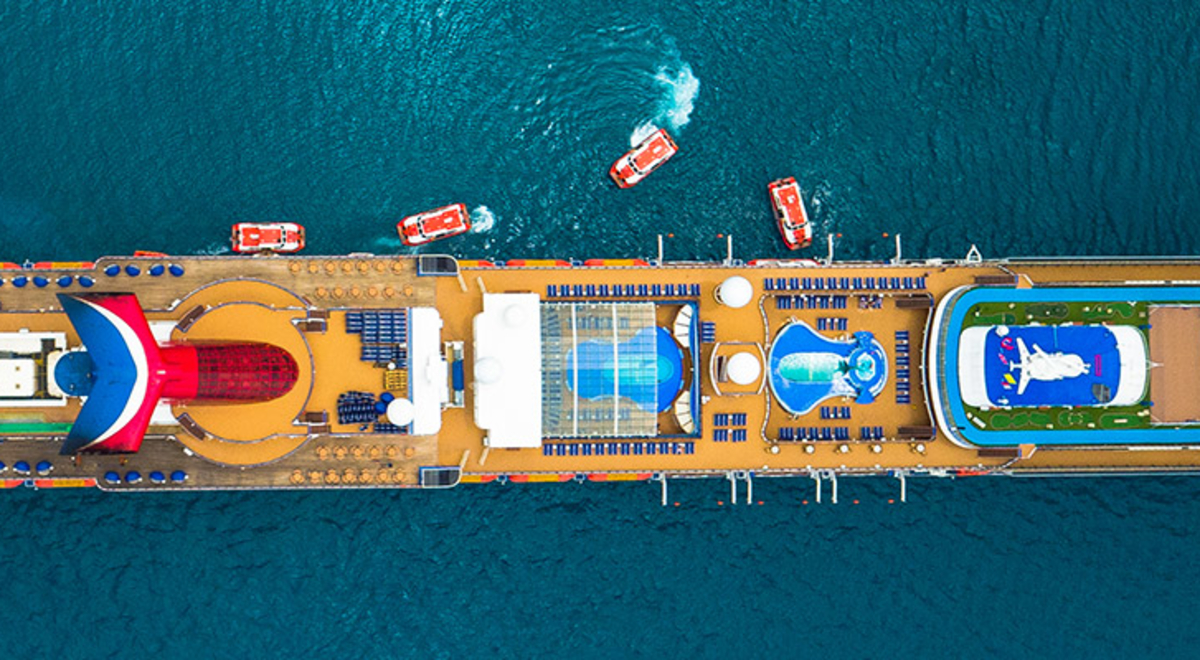Here's what you'll find out below:
-
The super strict health regulations cruise lines have to adhere to
-
New safety measures cruise lines are taking post-pandemic
-
Cruise vaccination requirements
-
Improved pre-embarkation and boarding procedures
-
Onboard safety measures including enhanced cleaning, ventilation and touchless technology
-
The highest-rated medical facilities and qualified staff on board
After a two-year hiatus due to the COVID-19 pandemic, cruising is well and truly back in 2022, but just how safe is it in a post-pandemic world?
The health and safety of passengers, crew and the communities that ships visit are a top priority for cruise lines. As such, they have been working hard during the cruise ban to develop policies and protocols to help mitigate the spread of COVID-19 and keep you safe and healthy.
International Health Regulations
Cruise lines are subject to international health regulations, and closely follow the advice of the Centres for Disease Control and Prevention (CDC). They are also required to follow much stricter reporting for disease outbreaks and illness than any other travel or hospitality sector.
Members of the Cruise Lines International Association have also collectively agreed on a series of health protocols to help manage the spread of COVID-19. This includes vaccine requirements, health screenings, social distancing, tighter protocols for shore excursions, improved onboard ventilation and medical staffing with the capacity to provide care for COVID-19 cases.
What Measures Are Cruise Lines Taking?
All cruise lines have used the ban to assess and improve their health and safety standards. Contactless technology, health screening and staggered embarkation to allow for greater social distancing are among some of the improvements cruise lines are implementing to keep you safe.
Vaccination Requirements
Vaccination requirements can vary depending on where you are cruising from, who you are cruising with, and where you are cruising to. In some cases, unvaccinated travellers may be able to cruise if they can provide a negative test result.
For voyages departing Australia, passengers over the age of 12 (or five in Western Australia) will be required to be fully vaccinated to cruise, unless they have a medical exemption.
Pre-embarkation and Boarding Safety
New safety measures introduced include pre-embarkation health screenings for all crew and guests across all cruise lines. This will likely include touch-free temperature checks, and further testing if required. Terminals and ships will be thoroughly sanitised between cruises.
Many cruises will also be using a staggered embarkation process to help manage social distancing. Carnival and Princess Cruises in particular have introduced an online check-in process which allows guests to use an app to fill out their pre-cruise health questionnaire, select a preferred arrival time at port, and plan ahead for staggered boarding.
Onboard Safety Measures
Mask Wearing
On many cruise lines, masks are currently recommended but not required. However, there are some situations, such as shore visits where masks may be required due to local restrictions. In these cases, this will be clearly communicated to you by the cruise operators.
Touchless Technology
A number of cruise lines have introduced touchless technology to help reduce contact and mitigate the risk of COVID-19 spreading. Princess’s new MedallionClass ships all provide a touchless experience for both ease and health. Using the Medallion, your stateroom door unlocks as you approach, meaning touching surfaces is limited.
This technology also allows guests to make purchases on board without handling cash or cards. Their OceanNow technology means the cruise line is able to control physical distancing in a new way, with tracking in the Medallion. For example, you can order food or drinks wherever you are on the ship, and even if you move, your items will find you.
Enhanced Cleaning
Onboard sanitisation has also been stepped up for all cruise lines. Disinfectants known to kill germs, including COVID-19, are used to clean frequently touched surfaces, while sanitisation and handwashing stations are provided in high-traffic areas on board.
Onboard Ventilation
Cruise lines are upgrading their onboard air filtration systems to ensure that fresh, clean air is circulating throughout the ship and airborne particles are being removed as frequently as possible. Princess has upgraded the HVAC systems in their ships and installed MERV 13 filters, following the highest CDC guidance as an example. HEPA filtration systems are also being installed in key areas such as medical centres and isolation facilities on board.
Designated Rooms For Quarantine
Despite their stringent health screenings of guests and crew, there is still the possibility of a positive case on board. In the event this should happen, under the Cruise Lines International Association’s regulations, cruise lines will have designated rooms for quarantine as well as enhanced air filtration to help stop the spread.
Onboard medical facilities
Cruise ships have always had some of the highest-rated medical facilities with qualified medical staff on board. In response to the pandemic, there are now dedicated onboard quarantine facilities available should they be needed, which will include testing facilities, and medical staff trained to deal with COVID-19 patients. Carnival Cruise Lines has promised that their crew will undergo daily health screenings and frequent testing, something many other cruise lines are likely to also implement.
Before going on a cruise, check:
-
You have cruise-specific travel insurance
-
You have a valid passport (if required) and any visas you may need
-
You have a health check and any vaccinations your doctor recommends
-
You understand any vaccine requirements
-
You have any medications you need








